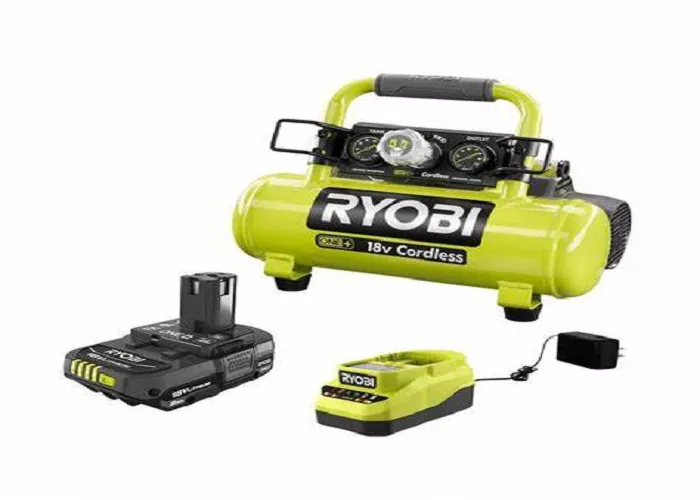Choosing the best air compressor for home use can be overwhelming due to the variety of options available. Whether you need it for DIY projects, inflating tires, powering tools, or light workshop tasks, selecting the right compressor requires understanding key factors such as power, capacity, portability, and noise levels.
Understanding Air Compressors: Types and Uses
Pancake Air Compressors
- Compact and lightweight.
- Ideal for small tasks like nailing, stapling, and inflating.
- Typically have a 3-6-gallon tank.
- Example: DEWALT DWFP55126.
Hot Dog (Single-Stage) Air Compressors
- Cylindrical tank design, slightly larger than pancake models.
- Good for light-duty tasks and intermittent use.
- Common in 4-6-gallon capacities.
- Example: Bostitch BTFP02012.
Wheelbarrow (Portable) Air Compressors
- Larger tanks (10-30 gallons).
- Best for continuous use with air tools.
- Often mounted on wheels for mobility.
- Example: PORTER-CABLE C2002.
Quiet Air Compressors
- Designed for low noise (below 60 dB).
- Great for indoor use without disturbance.
- Example: California Air Tools 8010.
Key Factors to Consider When Choosing a Home Air Compressor
Tank Size (Capacity)
Small (1-6 gallons): Best for short bursts (nail guns, inflating tires).
Medium (6-20 gallons): Handles longer tasks (painting, sanding).
Large (20+ gallons): Needed for heavy-duty tools (impact wrenches).
Motor Power (HP & Voltage)
120V (Standard household outlet): Common for small compressors.
240V: Needed for industrial-grade models.
CFM (Cubic Feet per Minute)
Measures how much air the compressor delivers.
Low CFM (0.5-2.5 CFM): Suitable for nail guns and inflatables.
Medium CFM (2.5-5 CFM): Handles spray painting and light sanding.
High CFM (5+ CFM): Needed for sandblasters and impact wrenches.
Noise Level
< 60 dB: Quiet (suitable for indoor use).
70-90 dB: Standard (louder, may require ear protection).
Duty Cycle
Indicates how long the compressor can run before needing a break.
50% duty cycle: Runs half the time (e.g., 5 minutes on, 5 minutes off).
100% duty cycle: Can run continuously (industrial-grade).
Portability & Weight
Pancake & hot dog models: Lightweight (easy to carry).
Wheelbarrow models: Heavy but movable.
Oil-Free vs. Oil-Lubricated
Oil-free: Low maintenance, shorter lifespan.
Oil-lubricated: Quieter, longer-lasting, requires maintenance.
Top 5 Best Air Compressors for Home Use (2024)
DEWALT DWFP55126 (Best Overall)
Type: Pancake
Tank: 6 gallons
CFM: 2.6 @ 90 PSI
Noise: 78.5 dB
Pros: Durable, reliable, good for nail guns.
Cons: Slightly noisy.
PORTER-CABLE C2002 (Best for Continuous Use)
Type: Wheelbarrow
Tank: 6 gallons
CFM: 2.6 @ 90 PSI
Noise: 82 dB
Pros: High CFM, durable, good for air tools.
Cons: Heavy, noisy.
Makita MAC210Q (Best for Portability)
Type: Hot dog
Tank: 4.2 gallons
CFM: 3.1 @ 90 PSI
Noise: 79 dB
Pros: Efficient, compact, good CFM.
Cons: Small tank.
Bostitch BTFP02012 (Best Budget Option)
Type: Pancake
Tank: 6 gallons
CFM: 2.6 @ 90 PSI
Noise: 78 dB
Pros: Affordable, reliable.
Cons: Plastic components.
Maintenance Tips for Longevity
Drain the Tank Regularly: Prevents moisture buildup.
Check Oil Levels (If Oil-Lubricated): Change oil every 500 hours.
Clean Air Filters: Ensures efficient airflow.
Inspect Hoses & Fittings: Prevents air leaks.
Store Properly: Keep in a dry, cool place.
Conclusion
The best air compressor for home use depends on your specific needs. For light tasks, a pancake or hot dog compressor works well. For medium-duty work, a twin-stack or portable 20-gallon model is ideal. Heavy-duty users should consider large stationary compressors.

